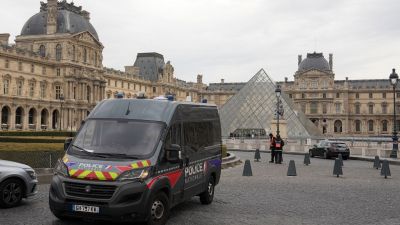SERENITY,Made in China
The rain-soaked islands of Qian Dao Hu offer a quietude that cant be bought in Shanghai
The rain-soaked islands of Qian Dao Hu offer a quietude that cant be bought in ShanghaiWe reach Qian Dao Hu (the Thousand Island Lake,as rich in hyperbole as in just-right-for-canvas greens and blues) on a particularly rainy weekend,but the cruise boat is packed as if it were one bright,sunny day. We shouldve known nothing,not even bad weather,can keep the Chinese tourists away. Besides,locals tell you,the rains only enhance the beauty of the lake. They are right. As grey clouds lower over the blue peaks in the distance and cast gloomy shadows over the water,the place looks straight out of some delicate Chinese painting.
In terms of natural beauty,few spots in China can surpass Qian Dao Hu,located in the eastern coastal province of Zhejiang. And that is something to be said in a country noted for the mountain range Huangshan and the Li river gorge. But Qian Dao Hus charms are more man-made than natural. The lake,after all,was formed only in 1959 when the ancient city of Shi Cheng was flooded for the Xinanjiang dam project. (The act of submerging a historical spot for the benefit of modern China was perfectly in keeping with what most people expected of Chairman Mao.) Then again,what is not unnatural is how China,a land that finds opportunity even in misadventures,has capitalised the stunning lake and its tiny islands for tourist revenue.
Only a handful of these islands are open for tourists. Each of them is themed Monkey Island,Snake Island,Island to Remind You of Your Childhood and Island to Enjoy the Moonlight. Lock Island is the first of our stops it is a beautifully landscaped piece of rock,with stylised sculptures of giant locks around which visitors have tied hundreds of small heart-shaped locks. Presumably,to unlock the desires of their hearts.
Our second stop is Bird Island,which,as the name indicates,is full of caged feathered creatures doves,pigeons,hawks,peacocks and turkeys that coo and squawk at peering visitors. One peacock sits disdainfully,away from the hordes of tourists,as its handler,with her arm around its gleaming lapis-blue neck,entices us to get our picture clicked by its side. The fauna is a great part of the attraction of these islands. Some of these are native,like the fishing kites and the golden koi fish,but most of them,including the peacocks and the fantail pigeons,have been brought to these isles merely to please the tourists. You can get a photograph of a hawk sitting on your suitably gloved hand for 50 yuan. Or,if you want to look like you went fishing,for 25 yuan you can pose with a fishing rod at the end of which is conveniently hooked a dead fish.
The islands,surprisingly clean for a place with frequent tourist footfalls,is redolent with the scent of green bamboo and fish roasting in snackshops. If you ignore the cries of some of the trapped birds,it also manages to be wonderfully serene.
The next day,we take off for what were told is an Oxygen Bar. We had no idea what to expect and it did seem like we could get swindled. However,when our taxi drops us at the base of a gently rising,heavily wooded forest,we realise why this place is called so. We take a hike through the forest its floor is suitably smoothened with wooden planks and rickety bridges are built over tumbling brooks. In the wet and pleasantly chilly weather,its a brisk walk up to Cloud Viewing Pavilion at the top. En route are picnic tables and benches,half hidden by hanging branches,and positioned near little waterfalls great if you want to stop for a quick snack. (Be Responsible Tourists,exhorts a signboard placed over a dustbin.)
Qian Dao Hu is a wonderful place to rejuvenate the tired body and mind. The main city itself is little more than a small town. Hardly anyone speaks any English and touts are mercifully missing from the local landscape. You can drift about the lakeside town,picking up miniature silk screens,and walk up and down the wet streets soaking in a kind of man-made serenity that cant be bought yet in Shanghai. It is possibly a blessing then that Qian Dao Hu is still a relatively well-kept Chinese secret. (It certainly doesnt get a mention in Lonely Planet.) But that could change. A five-star resort is already coming up on one side of the lake. It may spell the end of serenity for Qian Dao Hu,but maybe,just maybe,the waving bamboos and the rippling waters would work their magic on the noisiest of hordes and quieten them.
FAST FACTS
Getting there
The closest airport and railway station are in the provincial capital Hangzhou. There are hourly bus services from Hangzhou to Qian Dao Hu. Once there,you may either hire a taxi for the whole day or take one of the local buses to ride around town. Take a cruise to visit the nearby islands.
Best time to visit
The lake looks its best in the rains,so visit anytime between November and May. Even if it doesnt pour,the chill in the air will keep you from sweating on your long hiking trails.
Accommodation
The Qian Dao Building Hotel,located in the relatively more happening downtown area,is recommended.
Eating
Local cuisine is available at all restaurants and fish is a must-have. However,if you are the fussy type,you might have to eat at KFC. When you ask for tea,be prepared for the locally grown Dragon Well green tea. Chai,as we know it,comes in bottles.
Shopping
Pick up intricately embroidered,miniature silk screens in various colours. Or,buy bottles of pickled fish.



- 01
- 02
- 03
- 04
- 05




























